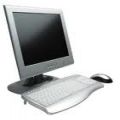Assistive and Adaptive Technology and Autism
Introduction

Assistive or adaptive technology commonly refers to "...products, devices or equipment, whether acquired commercially, modified or customized, that are used to maintain, increase or improve the functional capabilities of individuals with disabilities".
Assistance and adaptive technology is sometimes divided into high tech (uses electronic equipment) and low tech (does not use electronic equipment).
Many interventions which use assistive or adaptive technology also appear in other types of intervention. For example, some behavioural interventions (such as theory of mind training, video modelling, and visual schedules) rely on technology for their delivery.
Evidence
Determining the benefits of most forms of assistive and adaptive technology for autistic people is not currently possible. We must wait for further research of sufficiently high quality to be completed.
This may be because some technologies, such as apps, are too new to have a solid evidence base. However this situation may change in the next few years as there are several research projects underway at present.
Risks and safety
Different forms of assistive and adaptive technology pose different risks. For example, no risks are known for biofeedback but transcranial magnetic stimulation can sometimes produce seizures, painful scalp sensations, facial twitching and hearing problems.
Specific Types of Assistive and Adaptive Technology
We have categorised the different types of assistive and adaptive technology as follows (although there are many other ways in which they can be categorised and many individual interventions will fall under more than one of the following categories).
Augmentative and Alternative Communication (AAC)
Augmentative and alternative communication (AAC) involves alternate methods of communicating needs, feelings, ideas, and perceptions through the use of electronic and non-electronic devices that provide a means for expressive and receptive communication for persons with limited or no speech.
Specific forms of technology-based AAC include
- Low tech systems such as communication boards and books; the pictures used in the Picture Exchange Communication System
- Hi tech systems include mobile and portable devices (including phones and tablets); voice output communication aids (speech generating devices)
More information
Please see the section on Augmentative and Alternative Communication
Computer Access Aids, Daily Living Aids, Education and Learning Aids, Recreation and Leisure Aids
- Computer access aids include hardware (such as mobile devices) and software (such as apps) that enable people to access, interact with, and use computers.
- Daily living (or functional) aids are devices and tools (such as videos) which are designed to help people perform daily living activities, such as getting dressed, getting around safely and so on.
- Education and learning aids (such as robots and visual schedules) are designed to help people cope with educational tasks such as reasoning, decision making, problem solving etc.
- Recreation and leisure aids (such as models and toys) are designed to help people participate in sports, social, cultural events.
More information
Please see the section on Technology-Based, Behavioural and Developmental Interventions
Motor-Sensory Aids
Motor aids refer to any devices and tools which make use of, or which aim to improve, motor functioning i.e. control, coordination and movement of the whole body or parts of the body.
Sensory aids refer to any devices and tools which make use of, or which aim to improve sensitivity to, one or more of the senses.
Specific types of aids include:
- Environmental aids (such as workspaces) which are designed to remove or reduce physical barriers for individuals with disabilities.
- Hearing and listening aids (such as noise cancelling headphones) which are designed to help people gain a better sense of, and more control over, their hearing and auditory processing.
- Multi-sensory aids (such as multi-sensory environments), which make use of many different tools and devices at the same time.
- Positioning aids (such as therapy ball chairs) which are designed to help people gain a better sense of, and more control over, their own balance and coordination.
- Tactile aids (such as weighted blankets) which are designed to help people gain a better sense of, and more control over, their own tactile sensitivity.
- Vision and reading aids (such as coloured filters) which are designed to help people gain a better sense of, and or more control over, their vision.
More information
Please see the section on Motor Sensory Interventions
Medical Devices
We use the term medical devices to refer to any tools which are used within medical procedures, particularly those medical procedures which are being used in an alternative or 'off-label' way.
Specific medical devices include those used in:
- biofeedback including electromyogram, heart rate variability biofeedback and neurofeedback training.
- hyperbaric therapy.
- transcranial stimulation including transcranial direct stimulation and transcranial magnetic stimulation.
More information
Please see the section on Medical Procedures.
Related Pages
Related Glossaries
- Updated
- 26 May 2022

